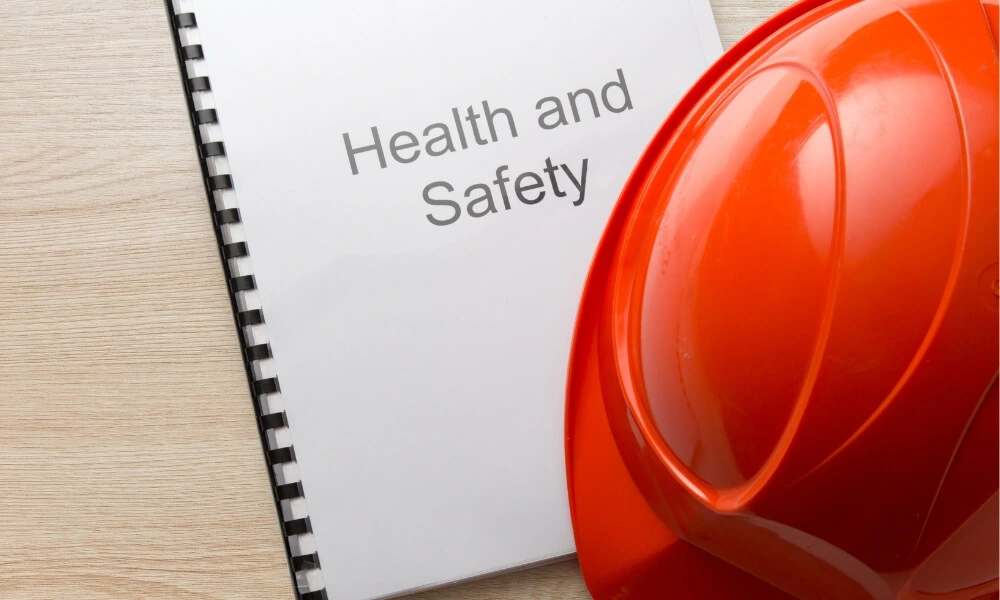In today’s world, ensuring good health and safety standards is of utmost importance in every aspect of our lives. Whether at home, in the workplace, or in public spaces, we all have a right to be protected from harm and injury. However, despite the growing awareness of the importance of health and safety, there are still many barriers that prevent us from achieving good standards.
In this blog, we will explore some of the common barriers to good health and safety standards and discuss how we can overcome them. From lack of awareness and training to organizational and societal issues, we will delve into the various factors that hinder our efforts to create a safer and healthier environment. So, let’s dive in and explore the world of health and safety barriers together.
Barriers To Promoting Good Standards Of Health And Safety
One of the most common barriers to promoting good health and safety standards is a lack of understanding among employees. Many workers are simply not aware of the importance of these standards and what they can do to improve them. This lack of understanding can lead to complacency and a general unwillingness to change.
There are several other potential barriers to promoting good standards of Health and Safety due to which organizations might not be able to achieve or maintain safety goals or performance standards. Due to failure to achieve good health and safety standards, accident rates might increase. Some of the most common barriers include:
1. Complex Workplaces
Complex workplaces can be found in many industries, such as construction, manufacturing, and healthcare. These workplaces involve various tasks and operations that require coordinating multiple workers, equipment, and materials. As a result, it can be challenging to maintain good health and safety standards for every person and activity.
In a complex workplace, several hazards may be present simultaneously, and each worker may have different requirements for safety equipment and procedures. For example, a construction site may involve workers using heavy machinery, working at heights, and handling hazardous materials. Each of these activities requires specific safety protocols and equipment to protect workers from harm.
Furthermore, communication and coordination are critical in complex workplaces to ensure that all workers know the hazards and safety procedures. However, ensuring everyone is on the same page and following the correct protocols can be difficult. This can lead to confusion, mistakes, and potentially hazardous situations.

2. Complex Issues
Complex health and safety issues can be challenging to manage, as they often involve several factors that may be interrelated or have a cascading effect. For example, a chemical spill in a factory may require immediate action to protect workers’ health and safety while also addressing the spill’s environmental impact.
In such scenarios, finding a solution might require a multidisciplinary approach involving chemical engineering, toxicology, and environmental science experts. This can be a significant barrier to promoting good health and safety standards, as organizations may lack in-house expertise or have difficulty accessing external resources.
In addition, finding the right solution requires extensive background knowledge and experience. This can be challenging for organizations with limited resources or lacking dedicated health and safety personnel. In such cases, the wrong selection of solutions might result in increased accidents, as the organization may not have the necessary skills and expertise to identify and manage the risks.
Moreover, some solutions may have unintended consequences or trade-offs. For instance, implementing a new safety protocol may result in increased production downtime or require additional resources, which can be costly for the organization. In such cases, organizations must carefully balance the potential benefits of the solution with the costs and any other potential risks.
3. Conflicting Demands
Conflicting demands can be a significant barrier to maintaining good health and safety standards in the workplace. Employers may place demands on workers to increase productivity or meet deadlines, while at the same time, workers may need to adhere to safety protocols and regulations.
For example, an employer may demand that certain products are produced or services delivered within a specific timeframe. However, this may require workers to speed up the production process or cut corners in safety procedures to meet the deadline, compromising safety.
In such situations, workers may feel pressured to prioritize meeting the employer’s demands over safety protocols, which can lead to increased accidents and injuries. The conflicting demands can create a culture where safety is seen as secondary to productivity or profit, which can be detrimental to workers’ overall health and well-being.
To overcome this barrier, employers must prioritize safety as a fundamental value and ensure that their demands align with health and safety standards. It is crucial to provide workers with the necessary resources, training, and support to perform their jobs safely and not create an environment where workers feel pressured to prioritize productivity over safety.
4. Conflict Of Standards
Conflict of standards can be a significant barrier to maintaining good health and safety standards in the workplace. This conflict can arise when there is a need to comply with different standards at the same time and place, such as health and safety laws and environmental protection laws.
For instance, health and safety standards demand the prompt removal of hazardous waste material from the workplace to prevent accidents and injuries, while environmental protection standards require the proper disposal of hazardous waste to prevent pollution and harm to the environment.
In such situations, organizations may face conflicting demands and need to compromise one standard to comply with another, which can compromise health and safety standards. For example, organizations may delay the removal of hazardous waste to comply with environmental protection laws, which can increase the risk of accidents and injuries in the workplace.
Organizations must prioritize health and safety standards to overcome this barrier and ensure that their operations comply with relevant regulations and standards. Providing workers with the necessary resources and training to manage hazardous materials safely and ensure prompt removal and proper disposal is crucial.

5. Budget Issues
Budget issues are one of the most significant barriers to promoting good health and safety standards in the workplace. Many employers may view investing in health and safety measures as an unnecessary expense or an additional financial burden. This is particularly true for small and medium-sized enterprises (SMEs) with limited budgets.
Improving health and safety standards can involve many measures, such as investing in protective equipment, implementing safety training programs, conducting regular inspections and risk assessments, and hiring qualified health and safety personnel. All of these initiatives require financial resources, and without adequate funding, it can be challenging to implement and maintain good health and safety standards.
In addition to budget constraints, some employers may lack awareness of the benefits of investing in health and safety measures. They may not fully understand the potential costs associated with workplace injuries, such as lost productivity, insurance claims, and legal fees. This lack of awareness can lead to a short-term focus on cost-cutting rather than long-term investments in health and safety.
6. Behavioral Issues
Behavioral issues can be a significant barrier to maintaining and promoting health and safety standards in the workplace. Human behavior can be unpredictable and influenced by various factors, including personal attitudes, beliefs, values, and social and environmental factors.
For example, workers may be aware of safety procedures and regulations. However, they may still engage in risky behavior due to peer pressure, time pressures, or a belief that safety measures are unnecessary. This can result in accidents and injuries, even if the hardware and procedural improvements are in place.
Low morale and motivation can also significantly challenge promoting good health and safety standards. Demotivated workers may be less likely to follow safety procedures and regulations and may not report hazards or incidents as quickly as they should. This can lead to an accumulation of safety issues that pose a significant workplace risk.
Additionally, workers may make mistakes or violate safety procedures inadvertently or deliberately, further eroding the safety culture. In some cases, workers may not be adequately trained or lack the necessary skills to perform their job safely, contributing to safety issues.
Employers can take several steps to overcome behavioral issues and promote good health and safety standards. One of the most critical steps is to foster a positive safety culture that values safety as a fundamental aspect of the workplace. This can involve providing regular safety training and education, encouraging workers to report hazards and incidents, and promoting open communication between workers and management.
7. Enforcement Agencies
Enforcement agencies can be crucial in implementing health and safety laws and regulations. Their absence or inadequate control can significantly hinder achieving national safety goals and improving workplace standards.
In many countries, the responsibility for enforcing health and safety laws and regulations lies with government agencies, such as labor or occupational health and safety departments. However, these agencies may face challenges in ensuring compliance with these laws and regulations, particularly in industries with a high risk of accidents and injuries.
In some cases, the lack of resources or staffing levels can limit the effectiveness of enforcement agencies. Inspectors may be overburdened with responsibilities, leading to limited coverage or inadequate attention to specific issues or sectors.
Additionally, the legal mandates and punishments available to enforcement agencies can influence the effectiveness of their actions. If the penalties for non-compliance are low, companies may be less motivated to invest in health and safety measures, and the consequences of breaching regulations may not be significant enough to deter companies from engaging in unsafe practices.

8. Lack Of Management Commitment
Lack of management commitment can be a significant barrier to maintaining good health and safety standards in the workplace. When management does not prioritize health and safety or demonstrate visible leadership, it can deteriorate the safety culture and cause a decline in worker morale.
For example, if management includes health and safety improvements in policy but does not allocate sufficient resources or provide the necessary training to support these improvements, workers may perceive that safety is not a priority for the organization. This can lead to a lack of motivation to follow safety procedures and regulations and can increase the risk of accidents and injuries.
Moreover, when management does not demonstrate visible leadership in health and safety, workers may be less likely to take safety seriously or to see it as an essential aspect of their job. This can create a culture where safety is not valued, and workers may be more likely to engage in unsafe practices or to overlook hazards or incidents.
To overcome this barrier, management should prioritize health and safety as a fundamental aspect of their business operations. This can involve demonstrating visible leadership by regularly communicating the importance of health and safety to workers and involving them in safety-related activities. Management should also allocate sufficient resources to support health and safety improvements and provide regular training and education to workers.
9. Ignorance Of Standard
Ignorance of health and safety standards can be a significant barrier to promoting good health and safety standards in the workplace. Workers unaware of health and safety standards may be more likely to engage in risky behavior or overlook hazards or incidents, increasing the risk of accidents and injuries.
It is crucial to involve workers in every step toward promoting good health and safety standards. This can involve consulting workers regarding health and safety matters, communicating all necessary information, instructions, and training on safe work systems, and providing regular updates on health and safety regulations and requirements.
If workers are not involved or safety standards are not communicated adequately, they may not be aware of the risks associated with their work and may not take the necessary precautions to ensure their safety. This can lead to increased accidents and injuries and a deterioration of the safety culture.
Employers should prioritize worker engagement and involvement in health and safety initiatives to overcome this barrier. This can involve providing regular training and education on health and safety standards and regulations, involving workers in safety committees and activities, and encouraging workers to report hazards and incidents promptly.

10. Ineffective Supervision
Ineffective supervision can be a significant barrier to maintaining and promoting good health and safety standards in the workplace. Supervision is critical in ensuring workers follow safety procedures and regulations and behave safely on the job.
If employers do not make arrangements for supervision or fail to take disciplinary action when workers demonstrate poor safety behavior, workers may be less likely to take safety seriously or to follow safety procedures and regulations. This can increase the risk of accidents and injuries and can deteriorate the safety culture.
Effective supervision can help to promote good health and safety standards by ensuring that workers receive regular feedback on their behavior and performance and are held accountable for following safety procedures and regulations. Supervisors can identify areas where workers may need additional training or support and can provide guidance and coaching to improve their safety behavior.
In addition to providing guidance and coaching, supervisors can also take disciplinary action when workers demonstrate poor safety behavior. This can include verbal warnings, written warnings, or even termination of employment in severe cases. These consequences can motivate workers to follow safety procedures and regulations and create a culture where safety is valued and prioritized.
To overcome the barrier of ineffective supervision, employers should prioritize the development of a strong supervision program that includes regular feedback and coaching on safety behavior and disciplinary action when necessary. Employers should also ensure that supervisors have the necessary training and support to effectively supervise workers and promote good health and safety standards in the workplace.
Conclusion
Promoting good health and safety standards in the workplace can face several barriers, including budget issues, behavioral issues, the absence or poor control of enforcement agencies, lack of management commitment, ignorance of standards, and ineffective supervision. Each of these barriers can impact the safety culture and increase the risk of accidents and injuries in the workplace.
To overcome these barriers, employers should prioritize health and safety as a fundamental aspect of their business operations, involving workers in health and safety initiatives, providing regular training and education on health and safety standards and regulations, and ensuring effective communication and supervision. Employers should also work with enforcement agencies and industry stakeholders to promote compliance with health and safety regulations and develop strong legal mandates and penalties for non-compliance.
By addressing these barriers and promoting good health and safety standards, employers can create a safer and healthier workplace, reduce the risk of accidents and injuries, and enhance the well-being of their workers.

